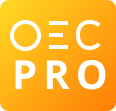South Korea-Indonesia Trade: In 2023, South Korea exported $10.5B to Indonesia. The main products that South Korea exported to Indonesia were Refined Petroleum ($941M), Integrated Circuits ($890M), and Cars ($472M). Over the past 5 years the exports of South Korea to Indonesia have increased at an annualized rate of 3.16%, from $9B in 2018 to $10.5B in 2023.
In 2005, South Korea exported services to Indonesia worth $473M, with Transportation ($314M), Other business services ($60.1M), and Services not allocated ($48.7M) being the largest in terms of value.
Indonesia-South Korea Trade: In 2023, Indonesia exported $10.3B to South Korea. The main products that Indonesia exported to South Korea were Coal Briquettes ($2.24B), Petroleum Gas ($1.44B), and Copper Ore ($1.26B). Over the past 5 years the exports of Indonesia to South Korea have decreased at an annualized rate of 1.59%, from $11.2B in 2018 to $10.3B in 2023.
In 2023, Indonesia did not export any services to South Korea.
Comparison: In 2023, South Korea ranked 4 in the Economic Complexity Index (ECI 1.85), and 5 in total exports ($645B). That same year, Indonesia ranked 65 in the Economic Complexity Index (ECI -0.085), and 27 in total exports ($299B).

